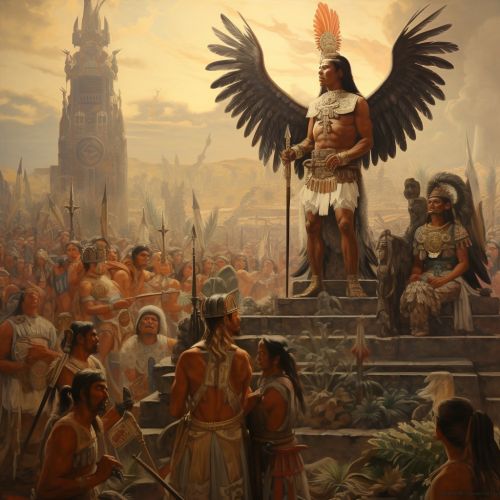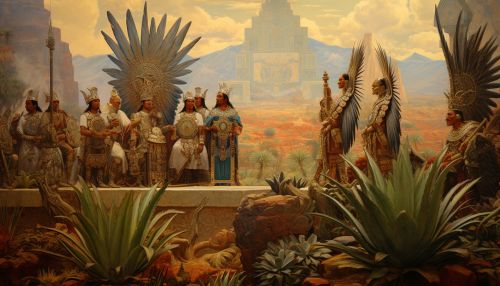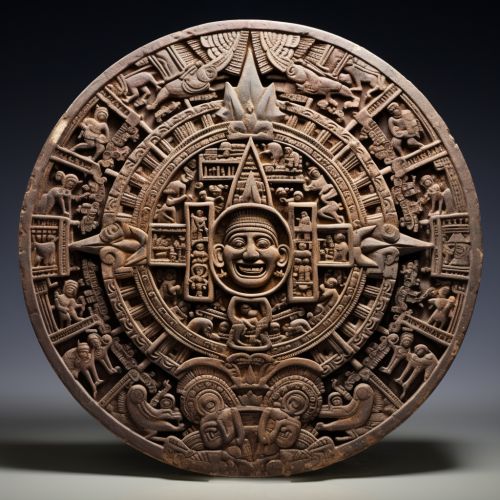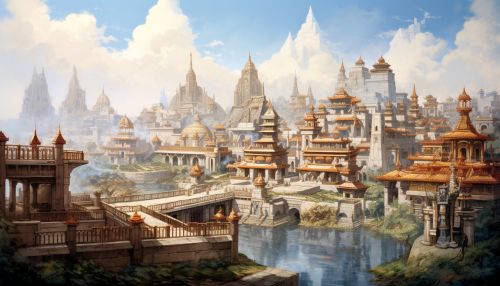Aztec Empire
Origins and Foundation
The Aztec Empire was a powerful Mesoamerican civilization that thrived in the region of present-day Mexico from the 14th to the 16th centuries. The empire was established by the Triple Alliance of the city-states of Tenochtitlan, Texcoco, and Tlacopan. The Aztecs, also known as the Mexica, were originally a nomadic tribe from the northern region of Mesoamerica, who settled in the Valley of Mexico in the 13th century.


The foundation of the Aztec Empire is deeply rooted in their religious beliefs. According to Aztec mythology, the god Huitzilopochtli instructed the Aztecs to find a place where they would see an eagle perched on a cactus, devouring a snake. This location, they were told, would be the site of a great city. The Aztecs found this sign on an island in Lake Texcoco and founded their capital city, Tenochtitlan, around 1325 AD.
Society and Culture
Aztec society was highly structured, with social classes that were clearly defined. At the top of the hierarchy was the emperor, or tlatoani, who held absolute power. Below him were the nobles, priests, warriors, merchants, artisans, farmers, and slaves. The Aztecs had a complex system of laws and punishments, and a well-organized system of education, with separate schools for the nobility and commoners.
The Aztecs were known for their rich and complex mythology, which was integral to their culture and daily life. They worshipped a pantheon of gods and goddesses, and religious ceremonies and human sacrifices were common. The Aztecs were also known for their advancements in astronomy, mathematics, and writing. They developed a system of pictographic writing and a calendar system that was highly accurate.


Aztec art and architecture were also highly developed. They built grand cities with towering temples, palaces, and public buildings, all arranged around a central plaza. Their art was rich with symbolism and often depicted gods, myths, and scenes from daily life.
Economy and Agriculture
The Aztec economy was based on agriculture and trade. The primary crop was maize (corn), but they also grew beans, squash, chilies, and other crops. The Aztecs developed a system of agriculture known as chinampa farming, which involved the creation of artificial islands in the lakes and canals of the Valley of Mexico. These "floating gardens" were highly fertile and allowed for year-round farming.
Trade was also an important part of the Aztec economy. The Aztecs traded with other Mesoamerican civilizations and tribes, exchanging goods such as cotton, cacao, obsidian, jade, feathers, and shells. Markets were a central feature of Aztec cities, with the largest market located in the city of Tlatelolco.
Military and Conquests
The Aztec Empire was a militaristic society, with a strong and disciplined army. Military service was mandatory for all male citizens, and warriors could rise in social status through their achievements in battle. The Aztecs engaged in warfare for two primary reasons: to expand their territory and to capture prisoners for religious sacrifice.
Under the reign of Emperor Ahuitzotl, the Aztec Empire reached its greatest extent, stretching from the Atlantic to the Pacific, and from central Mexico to the present-day border of Guatemala. However, the empire's aggressive expansion and heavy demands for tribute and sacrifices led to resentment and rebellion among the conquered peoples.
Fall of the Aztec Empire
The fall of the Aztec Empire came with the arrival of the Spanish conquistadors, led by Hernán Cortés, in 1519. Despite being vastly outnumbered, the Spanish had several advantages, including superior weaponry and armor, diseases that devastated the native population, and alliances with other indigenous groups who were enemies of the Aztecs.
After a two-year war, the Spanish captured Emperor Cuauhtémoc and sacked Tenochtitlan in 1521, marking the end of the Aztec Empire. The Spanish then established the colony of New Spain, and over the following centuries, the indigenous cultures and civilizations of Mesoamerica were gradually erased and replaced with Spanish culture and Catholicism.
Legacy of the Aztec Empire
Despite its fall, the Aztec Empire left a lasting legacy. Many aspects of Aztec culture, including their mythology, agricultural techniques, and art, have been preserved and continue to influence Mexican culture today. The site of Tenochtitlan is now Mexico City, one of the largest and most populous cities in the world.


The Aztecs also left a significant archaeological legacy, with numerous ruins and artifacts that provide a window into their civilization. The most famous of these is the Aztec calendar stone, also known as the Sun Stone, which is one of the most important symbols of Mexico.
